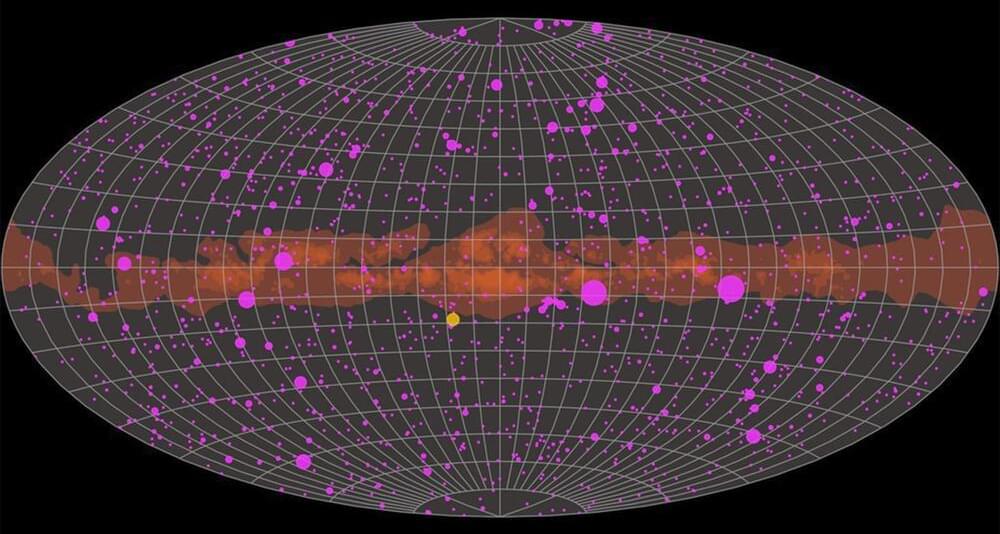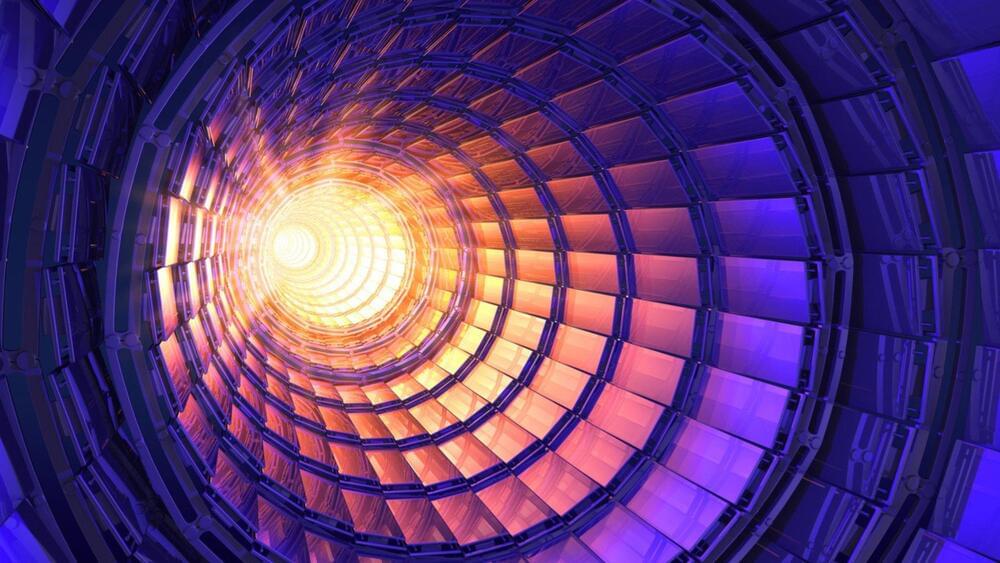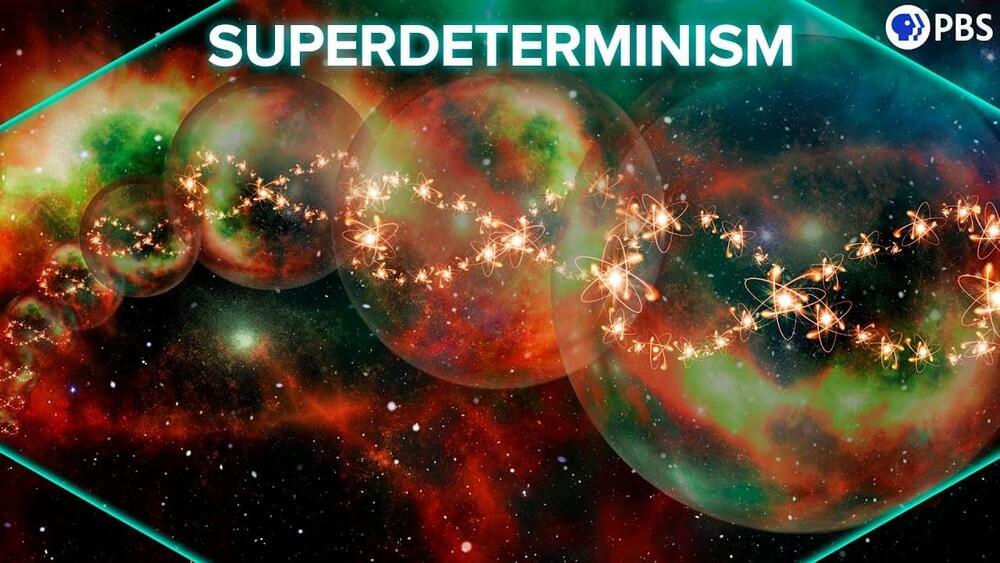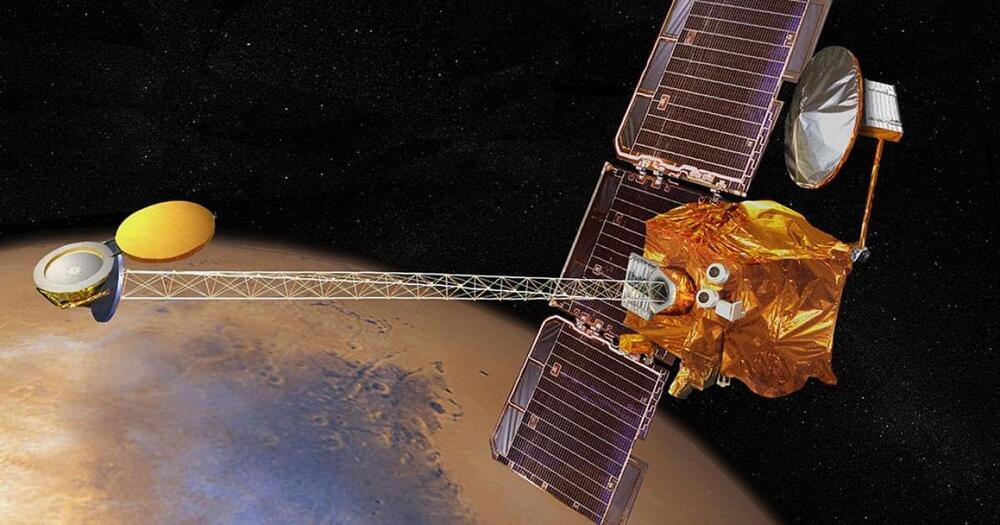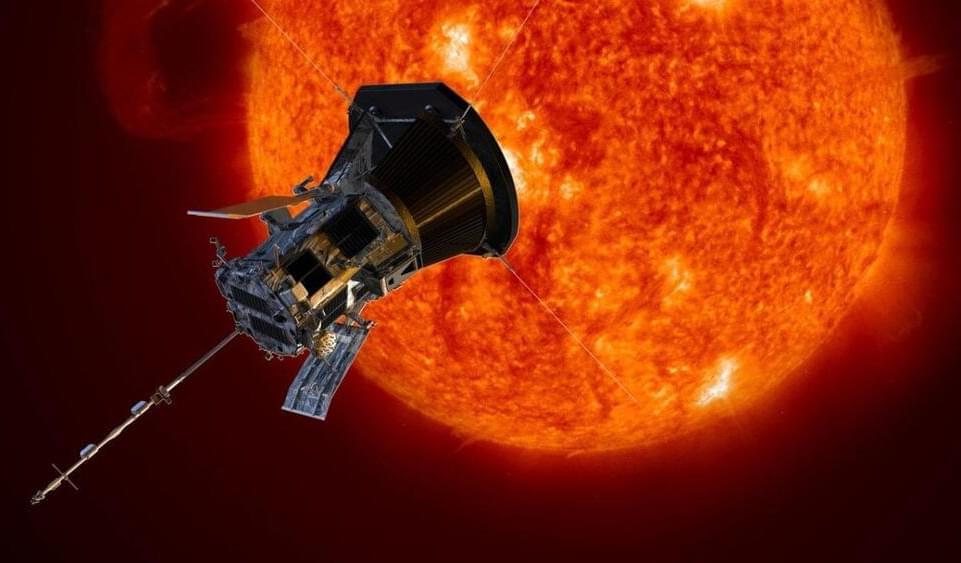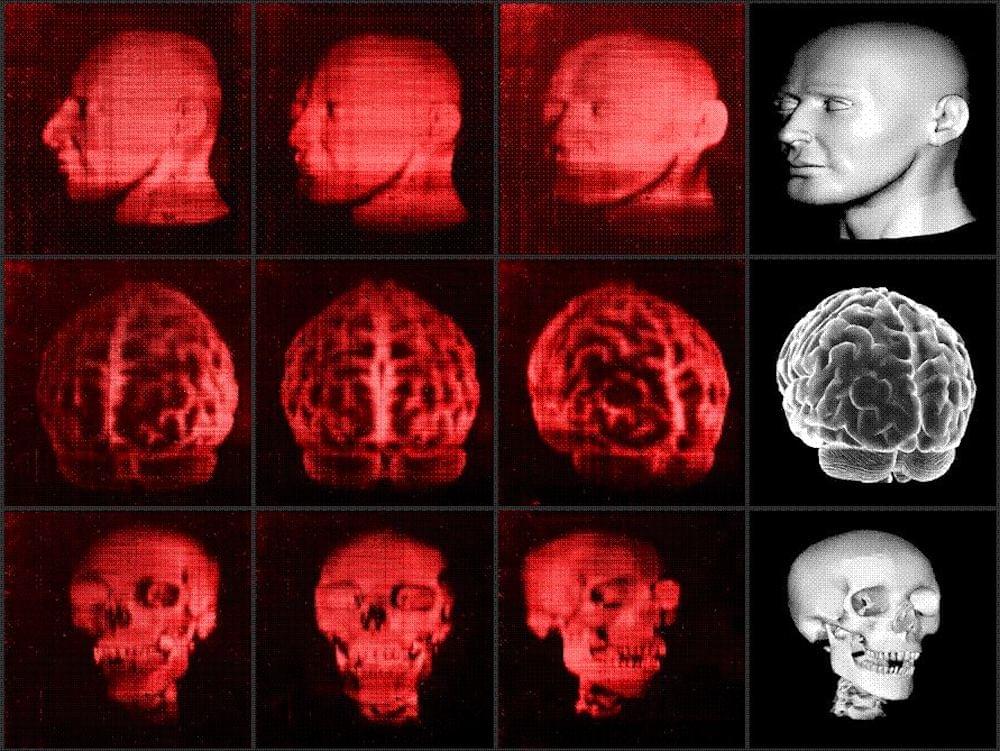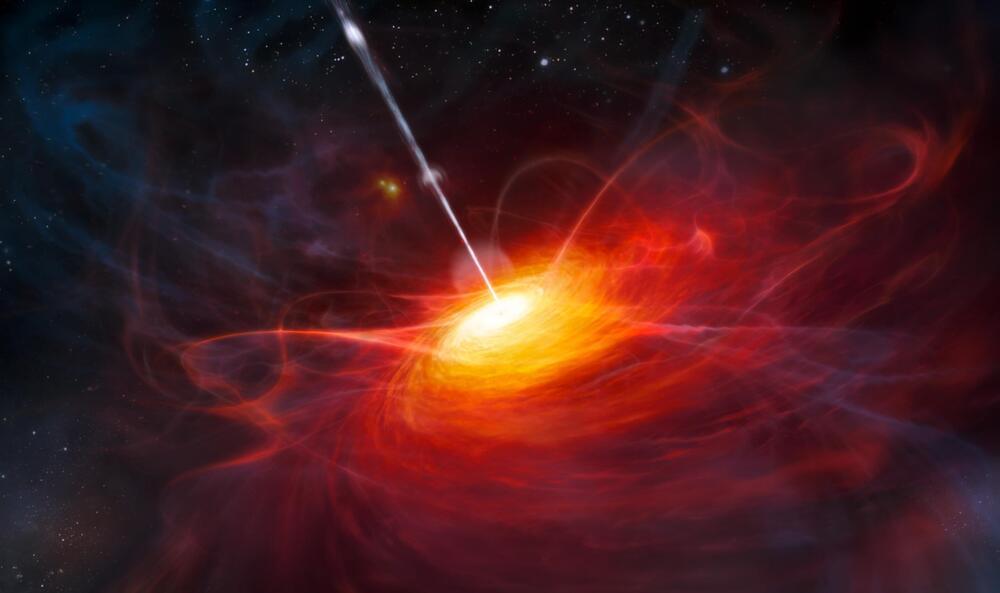Mar 21, 2023
Watch: NASA’s Fermi captures cosmic fireworks invisible to the bare eye
Posted by Gemechu Taye in categories: energy, space
The animation shows a subset of more than 1,500 light curves collected by the Large Area Telescope over nearly 15 years in space.
NASA has released an intriguing animated video of the sky in gamma rays, the “highest-energy form of light”. Captured by the Large Area Telescope (LAT) aboard NASA’s Fermi Gamma-ray Space Telescope, the animation shows activity during observations from February 2022 to February 2023.
According to a press release, the “pulsing circles represent just a subset of more than 1,500 light curves – records of how sources change in brightness over time – collected by the LAT over nearly 15 years in space”. The LAT detects gamma rays with energies ranging from 20 million to over 300 billion electron volts.
